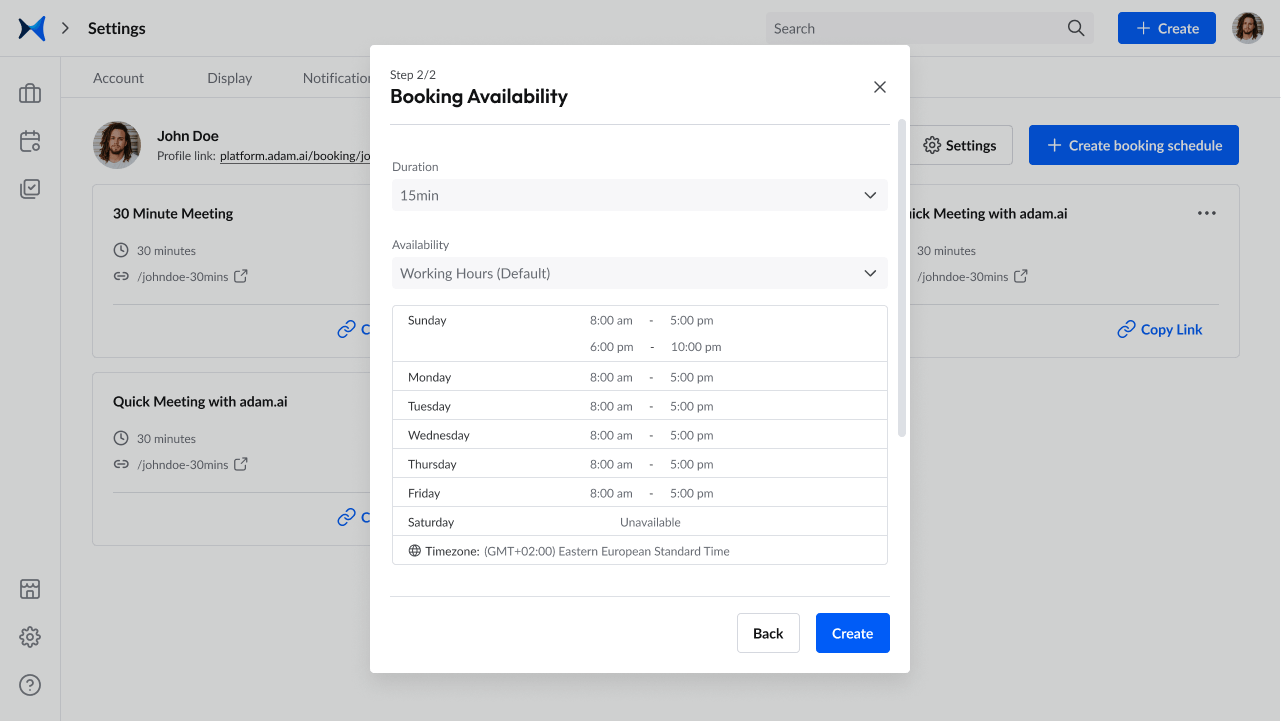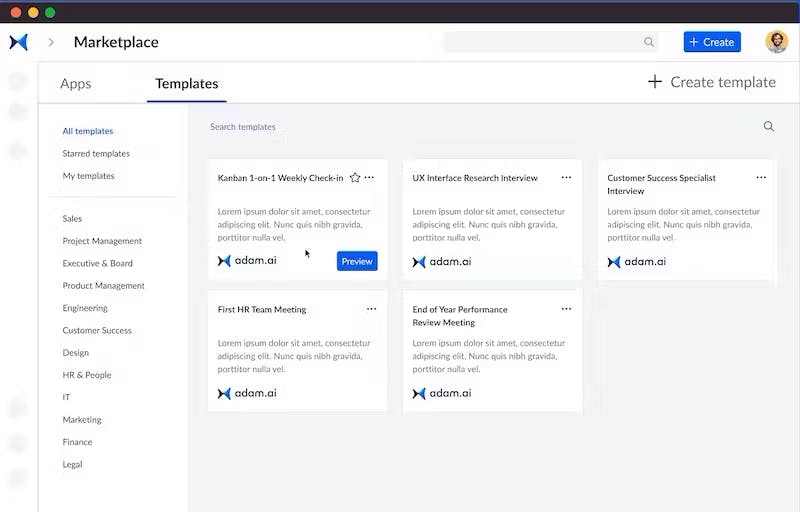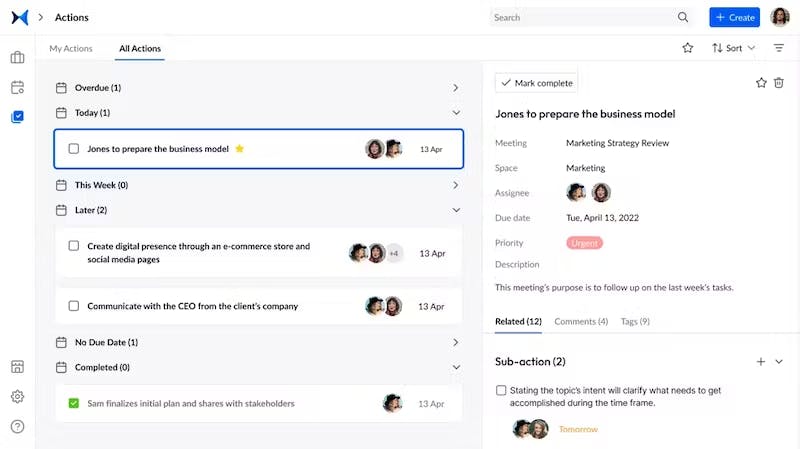November 21, 2023 · 10 min read
What Is a Quorum in Board and Committee Meetings?

Shaimaa Badawi

In corporate governance, the concept of "what is a quorum" holds significant importance. The establishment and maintenance of a quorum are essential for the legitimacy and effectiveness of board and committee meetings.
Understanding what constitutes a quorum and why it matters is fundamental for any organization, as it sets the stage for robust decision-making processes and ensures that the interests of stakeholders are adequately represented. Let’s find out the definition of a quorum, its requirements, and importance and how to reach a quorum in board and committee meetings.
What is a quorum?
A quorum represents the minimum number of individuals in a company or organization required to validate the proceedings of a meeting, as stipulated by its bylaws or corporate charter.
In essence, a quorum ensures that there is sufficient representation and participation before any significant changes or decisions can be made by a board or group. It acts as a safeguard against minority rule and rash decision-making, promoting a more balanced and comprehensive approach to governance.
This critical requirement prevents a select few from wielding excessive influence and ensures that decisions are made in the best interests of the organization as a whole. The term "quorum" may sound vague, but its definition varies to accommodate the diverse needs of different organizations that adhere to parliamentary procedures.
Without a quorum, a meeting can technically proceed, but it lacks the capacity to make substantial decisions. Instead, it may be limited to setting a future meeting date with hopes of reaching a quorum on that occasion.
In the context of board and committee meetings, adhering to quorum protocols is of utmost importance. It guarantees that the board has a sufficiently representative and engaged presence during meetings, which is essential for making informed decisions about the organization's present and future direction.
What's the importance of a quorum?
A quorum for board meetings is indispensable in the decision-making process, ensuring its integrity and legitimacy. It functions as a vital mechanism to uphold the principles of fairness and balanced representation within the board.
Without a quorum, certain critical actions become unattainable such as achieving unanimous votes or deciding on holding a future meeting. In these cases, the absence of a quorum impedes the gathering of a sufficient number of members required for a majority decision.
It is essential to recognize that achieving perfect attendance at every board meeting is a rarity. Therefore, the quorum establishes a benchmark by setting an acceptable minimum number of participating members. This minimum number ensures that board decisions are well-informed and avoids the risk of overturning them in subsequent meetings when more members are present.
Moreover, the significance of a quorum lies in preventing the adverse effects of minority rule. It acts as a safeguard against scenarios where a small fraction of directors wields disproportionate influence, making decisions on behalf of the entire organization.
Ultimately, a quorum ensures that the decisions taken truly reflect the collective views and interests of the entire board, promoting accountability, balance, and the best interests of stakeholders.
Master the art of board meetings—download your free guide, "Navigating the Boardroom: A Practical Guide to Effective Board Meetings," today!
What percentage is a quorum?
Determining the exact percentage for a quorum in board meetings can vary based on different factors. Here are some examples and considerations:
- Simple majority: In some cases, a simple majority is sufficient to establish a quorum. For instance, if there are ten board members, a quorum could be defined as a minimum of six of them present in attendance. This represents more than half of the total board.
- Two-thirds majority: Some organizations may require two-thirds of the members to be present to establish a quorum. This means that a significant majority of members must be present for decisions to be valid.
- Bylaws and legal requirements: Many organizations establish quorum requirements in their bylaws or adhere to legal mandates. These requirements may specify a fixed number, a percentage, or both, depending on the organization's structure and jurisdiction.
- Flexibility vs. legitimacy: Striking the right balance between ensuring legitimacy and maintaining flexibility is essential. Quorum percentages should be set to ensure that decisions have sufficient support while allowing for flexibility when some members cannot attend.
- Variable quorums: Quorum requirements may vary for different types of meetings or under specific circumstances. Additionally, some organizations might permit remote attendance to count towards the quorum.
- Exceptions: Organizations may outline exceptions to quorum rules in their bylaws or policies. These exceptions could specify different quorum percentages for particular types of organizations, such as governmental or nonprofit organizations, or under specific conditions.
What happens in the absence of a quorum?
A quorum is essential in board meetings to ensure that decisions are made with sufficient representation. However, there are situations where a quorum may be lost during a meeting or is not initially present. Here's what happens in the absence of a quorum:
- Meeting rescheduling: When a quorum is lost mid-meeting due to members leaving or being unable to attend, existing attendees can consider scheduling the meeting at a later time. This approach aims to fix the quorum but may result in delays to the established schedule.
- Meeting recess: If a quorum is lost during a meeting, especially due to members taking personal breaks or leaving unexpectedly, the remaining attendees can opt for a meeting recess. This pause allows time to round up more members and meet the quorum requirement.
- Meeting adjournment: In situations where the meeting's agenda does not require immediate action and time-based decisions, the remaining attendees can choose to adjourn the meeting. The defined agenda can then be addressed at the next scheduled meeting, ensuring a quorum is met.
- Privileged motion: Members may invoke a privileged motion to proceed with the regular order of business, without addressing issues that require a quorum. This allows for the continuation of essential matters while acknowledging the absence of a quorum.
It's essential to document any loss of quorum and the subsequent actions taken in the meeting minutes. When a quorum is absent, these measures help maintain transparency and accountability while ensuring that business decisions are revisited in a proper forum.
How to reach a quorum
Ensuring a quorum in board meetings is essential for effective decision-making and governance. To help your board consistently reach a quorum, consider the following strategies and tips:
- Assess members' availability: Begin by understanding the preferred days and times when board members can attend meetings. Conduct surveys or polls to gather this information and collaborate with administrators to schedule meetings accordingly.
- Establish recurring meeting times: Once you've determined a suitable meeting time, make it a regular occurrence.
- Notify members promptly: Besides sending meeting invitations, use email calendars and personal reminders to ensure members are well-informed about upcoming meetings. Adequate notice can significantly improve attendance.
- Evaluate meeting relevance: Assess the meeting agenda to ensure it contains relevant and productive topics. Reducing the number of meetings and focusing on essential matters can make attendance more appealing.
- Streamline meeting duration: Keep official meeting segments concise, making it easier for members to fit meetings into their schedules.
- Highlight impact on decision-making: Emphasize the importance of attendance by directly communicating how it influences organizational decisions and governance. Make board members aware of the significance of their participation.
- Offer flexible attendance options: Explore options for remote attendance through phone or video conferencing, especially in the context of virtual or hybrid meetings. Ensure that your technology and procedures support this approach effectively.
- Implement proxy voting: Consider allowing members to designate another member to vote on their behalf, especially for routine or unanimous decisions.
- Continuous assessment: Regularly evaluate meeting procedures, attendance, and member satisfaction to address any issues that may affect quorum.
Board management software to establish a quorum
The adoption of board management software has revolutionized the way organizations conduct board and committee meetings and, in particular, has streamlined the process of achieving and maintaining a quorum.
These innovative solutions offer a wide range of features that play a pivotal role in boosting attendance, facilitating communication, and improving overall meeting efficiency:
- Virtual board meetings: Board management software enables the seamless organization of virtual board meetings, where all participants have the option to join remotely. This virtual approach eliminates geographical constraints and encourages broader participation, ultimately contributing to a higher likelihood of reaching a quorum.
- Real-time meeting broadcast: The software includes capabilities to broadcast board meetings to remote participants, ensuring that all members, regardless of their physical location, can actively engage in discussions and decision-making processes.
- Automated notifications and reminders: A key advantage of board portals is their ability to automate notifications and reminders related to upcoming meetings. These automated prompts serve as timely reminders for board members, saving valuable time and ensuring that everyone is well-informed about important dates and agenda items.
- Online voting: Board management software simplifies the voting process by providing an online platform for efficient decision-making. Not only is this useful for virtual meetings but it also enhances the speed and accuracy of in-person meetings, making it easier to secure a quorum for voting on critical matters.
- Document management: The platform serves as a central repository for all meeting-related documents. Board members can exchange and update documents in real time, eliminating the need for countless email threads and file downloads. This not only enhances collaboration but also saves valuable time for secretaries and board chairs who no longer need to send frequent document updates.
- Attendance tracking: These platforms include robust attendance tracking capabilities, providing insights into the number of directors present during meetings. This data helps organizations better understand their quorum adherence and serves as valuable input for potential quorum rule adjustments.
An all-in-one meeting management platform, like adam.ai, can help you manage your entire meeting lifecycle before, during, and after board and committee meetings, while allowing you to fulfill quorum requirements.
Here's how adam.ai can help you establish quorums:
1. Sync all your calendars on one platform and create unlimited booking pages to show your availability and accommodate the schedules of busy board and committee members to establish a quorum with ease.

Screenshot from adam.ai: Booking pages.
2. Record agenda items, actions, polls, decisions, and notes using a smart note-taking system displayed side by side with the built-in video-conferencing feature for enhanced collaboration and productivity, with the ability to integrate with popular video-conferencing tools you're familiar with.

Screenshot from adam.ai: Video call displayed side by side with the meeting content.
3. Choose a customizable meeting agenda template from our gallery to kickstart preparation for your board and committee meetings and ensure they adhere to quorum requirements.

Screenshot from adam.ai: Meeting templates.
4. Track your actions to ensure task ownership and accountability and improve decision-making with a powerful follow-up system with the ability to search for actions across all meetings.

Screenshot from adam.ai: Manage actions.
5. Categorize meetings into spaces, including project, team, board, and committee, and have all their content under a specific umbrella for easy access.

Screenshot from adam.ai: Meeting spaces.
6. Generate and share meeting minutes to keep record of quorums in board and committee meetings.

Screenshot from adam.ai: Meeting minutes.
7. Ask Adam the AI Assistant to generate meeting transcripts, enhance your meeting content, suggest agendas, and highlight action items and key insights.

Screenshot from adam.ai: Adam the Assistant.
Get started right now to experience the true meaning of all-in-one meeting management.
Transform how you conduct critical meetings—From meticulous preparation to effective execution and insightful follow-up, adam.ai integrates comprehensive analytics, full customization, and intuitive interfaces with powerful meeting management tools.
Easy onboarding. Enterprise-grade security. 24/7 dedicated support.
The bottom line
Answering the question, “what is a quorum,” we’ve established its meaning, significance, percentage needed to achieve it, and how to reach a board quorum. Whether achieved through meticulous planning, thoughtful scheduling, or innovative board management software, reaching a quorum represents a critical milestone in board and committee meetings.
We recommend trying an all-in-one meeting management platform, like adam.ai, to help you establish a board quorum through effective scheduling, a voting system, timed meeting agendas, and much more.
And while there may be multiple meeting management solutions available, here is why adam.ai is the all-in-one meeting management platform you can trust:
- adam.ai is one of Atlassian Ventures' portfolio companies.
- In the meeting management software category on G2, adam.ai has been ranked a leader and a high performer for successive quarters in the past years.
- adam.ai has been included in the Forrester Report in the AI-enabled meeting technology landscape.
- adam.ai is trusted and used by powerful teams and organizations worldwide for all types of critical meetings, like board, committee, project management, and business development meetings.
- And most importantly, adam.ai integrates with your existing workflow, is SOC2 compliant, provides dedicated support and success, and has a free trial option.
Subscribe to adam.ai blog
Stay ahead with the latest insights—get our newest blog posts, tips, and updates sent straight to your inbox.